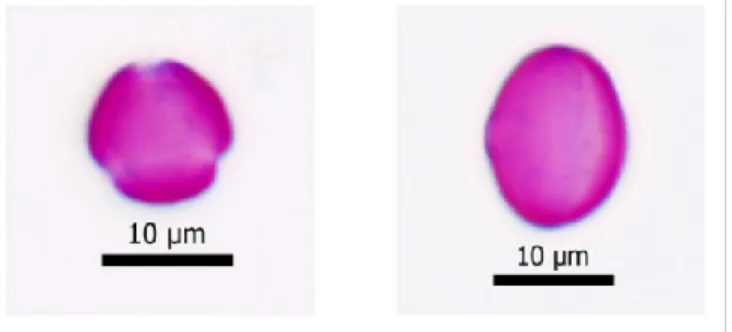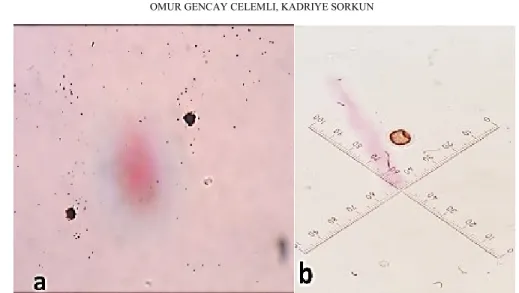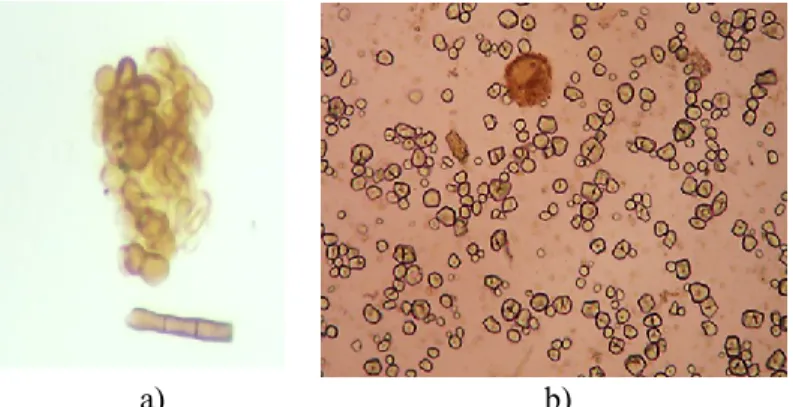http://communications.science.ankara.edu.tr/index.php?series=C
Received by the editors: November 29, 2018; Accepted: December 05, 2018. Key word and phrases: Melissopalynology, history, honey, methods, pollen analysis.
Submitted via II. Aerobiology and Palynology Symposium 07-10 October 2018 (APAS 2018)
© 2018 Ankara University Communications Faculty of Sciences University of Ankara Series C: Biology HISTORY OF MELISSOPALYNOLOGICAL METHODS
OMUR GENCAY CELEMLI, KADRIYE SORKUN
Abstract. Melissopalynology is a branch of palynology, that gives foreknowledge about the botanical and the geographical source of honey. Honey always contains various pollen grains and also honeydew elements (algae, fungal spores etc.) and these give information about the environment that honey comes from. While melissopalynology examines the pollen and the other particles in the honey, it also gives detailed data about the process of honey production such as extraction, filtaration, fermentation, adulteration and the hygiene of honey sample. Melissoplaynological researches was started firstly by Pfister (1895) and in the following years so many researches were done. Melissopalynological analysis generally classified as qualitative and quantitative analysis. Qualitative analyses are based on identification of pollen types and the other microparticules that observed in the honey. As for quantitative analysis are the analysis that are focused on the calculation of pollen richness in the honey. The results of the melissopalynological analysis show that pollen analysis is necessary to characterize the source of honey. The significant point is the person who does the pollen analysis must be experienced. On the other hand any faults about the pollen identification cause bigger problems for further interpretations.
1. Introduction
Melissopalynology is the branch of palynology which studies the botanical and geographical origin of honey by microscopic analysis [1].
Honey is the natural sweet, viscous substance produced by honeybees from the nectar of blossoms or from the secretion of living parts of plants or excretions of plant sucking insects on the living parts of plants, which honeybees collect, transform and combine with specific substances of their own, store and leave in the honey comb to ripen and mature [2].
It should also be mentioned that there is nectar honey and honeydew honey and that there are unifloral and multifloral (diverse nectar sources are present) types of honey [3].
HISTORY OF MELISSOPALYNOLOGICAL METHODS 89
The nectar can be contaminated by the pollen at various times. There are three pollution categories: primary, secondary and tertiary. Primary pollution occurs in the flower as a result of the mechanical action of insects, wind, etc. These agents shake the anthers and the pollen becomes detached and falls into the nectar of the same flower. Secondary pollution takes place from the moment when the nectar arrives in the hive to the moment when the cell, overflowing with honey, is capped. However, it should be mentioned that some alterations to the pollen content take place during the transport of the nectar to the hive. Third pollution; while honey extraction from the stored pollen in the combs [4].
2. Advantages Of Mellissopalynology For Determining Honey Quality
Melissopalynology is important to specify the botanical origin and the geographic origin of the honey (Figure 1). This analysis also give information about the hygiene of honey (Figure 2).
FIGURE 1. Microphtographs of Castanea sativa pollen from a chesnut honey pollen slide.
FIGURE 2. a) Spores b) Taenia egg detected in a honey sample by microscopic analysis.
3. History Of Melissopalynology
The earliest research on the pollen analysis of honey was undertaken by Pfister in 1895; Fehlman, 1911, Armbruster, 1929, 1934-35; Griebel, 1931. [5-9]. The most authoritative of these researchers is certainly Zander, whose works (1935, 1937, 1941, 1949, 1951) are still the main reference point for whoever is interested in this subject [10].
After this researches, a method for melissopalynology was arranged by International Comission for Bee Botany (ICBB) and it is published [11] but to develop this methods International Honey Commission gave a start to a ring trial (to standardize the sample preparation and the number of grains). In this trials two kind of analysis were trained (Qualitative and quantitative analysis) [1].
By qualitative analysis; the ring trial group performed the identification of plant elements in the slides that prepared from honey sediments. By quantitative analysis they counted the plant elements that determined in the slides and interpreted the results [1].
HISTORY OF MELISSOPALYNOLOGICAL METHODS 91
4. Results
According to the ring trial’s results they decided to counting at least 300 elements to determine pollen types in the honey and also decide to counting 500-1000 pollen to determine the frequency. The group also mentioned the necessity of remarking the honeydew elements, pollen of nectarous plants, hyphe and spores, microcrystals, plants particles, starches that are determined by qualitative analysis (Figure 3). They also decided to count at least 500 elements (pollen and honeydew elements) for quantitative analysis [1].
a) b)
FIGURE 3. a) Spore and hyphae b) Starch grains that are detected in honey sample.
By interpretations of qualitative analysis results botanical origin and also the type of honey (unifloral, multifloral) can be detected owing to the frequencies of pollen. By quantitative analysis the calculation of total pollen number in 10 gram honey (TPN 10) and also honeydew elements in 10 gram honey (HDE10).
After this trial, following researches were done by minor changes in the methods. In the current, the most method that is preferred for analysis of honey is as described by Louveaux et al. (1978) [11].
References
[1] W.V. Der Ohe, L.P. Oddo, M.L. Piana, M. Morlot, P.Martin, Harmonized methods of melissopalynology. Apidologie, 35, (2004) 18-25.
[2] M.A. Abeshu, B.Geleta, Medicinal Uses of Honey, Biology and Medicine, 8(2), (2016) 1-7.
[3] http://www.izsum.it/Melissopalynology/melisso.htm.
[4] R. Galarini, M.R. D’Albore, Mediterranean Melissoplaynology. Ed: Roberto galarini and Matteo Riciardelli D’Albore (2001).
[5] R.Pfister, Versuch einer Mikroskopie des Honigs. Foschungsber. – Lebensmitt. Bez. Hyg. Chem. Pharm. (Munchen), 2 ( 29), (1895).
[6] C. Fehlmann, Beiträge zur mikroskopischen Untersuchung des Honigs. Mitt. Schweitz. Gesundheitsamtes, 2, (1911) 179-221.
[7] L. Armbruster, G. Oenike, Die Pollenformen als Mittel zur Honigherkunftsbestimmung.Wachholz.Nemünster, (1929).
[8] L. Armbruster, J. Jacobs, Pollenformen und Honigkerkunfbestimmung. Arch.J.Bienek. (1934-1935) 15(8): 277-308; 16 (1.2B):17-106.[9]. C. Griebel, Zur Pollenanalyse des Honigs.Z.f.Unters.der Lebensmittel, 61 (3), (1931) 241-306.
[9] E. Zande, Beiträge zur Herkunftsbestimmung bei Honig. I-IV. I: Reichsfachgruppe Imker. Berlin; II, III, V: Liedloff, Loth & Michaelis, Leipzig; IV; Ehrenwirth, München. (1935, 1937, 1941, 1949, 1951).
[10] J. Louveaux, A. Maurizio, G. Vorwhol, Methods of melissoplaynology, International Bee Research Association. Bee World, 59 (4), (1978) 139-157.
Current Address: OMUR GENCAY CELEMLI: Hacettepe University, Science Faculty, Department of Biology or Hacettepe University Bee and Bee Products Applied and Research Center, Beytepe-Ankara. Turkey.
E-mail: gencay@hacettepe.edu.tr
ORCID:https://orcid.org/0000-0002-2215-9552
Current Address: KADRIYE SORKUN: Hacettepe University, Science Faculty, Department of Biology or Hacettepe University Bee and Bee Products Applied and Research Center, Beytepe-Ankara. Turkey.
E-mail: kadriye@hacettepe.edu.tr


